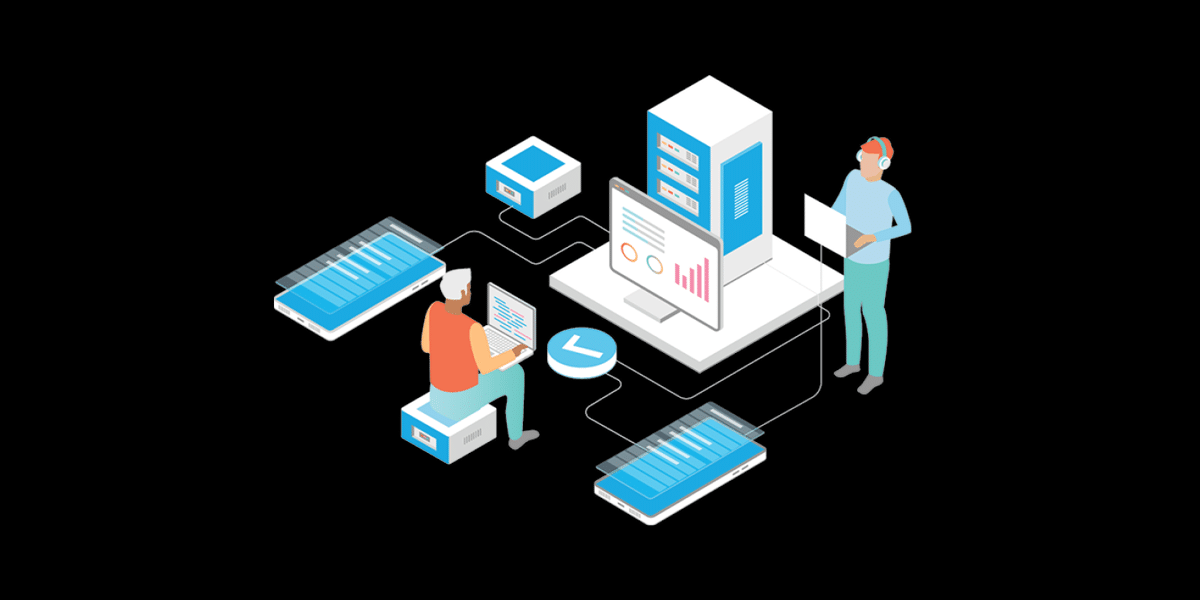Backup management: Peace of mind for your digital life.
It’s like insurance for your data. Automates and organizes backups, ensuring critical information is safe from accidents, outages, and even cyberattacks. Get back up and running quickly with easy restores, so you can focus on what matters.
Atiba is a leading provider of backup management services that help businesses protect their data and ensure business continuity. We understand the importance of backup management in today’s digital age, where data is the lifeblood of businesses. With our expertise and experience, we can help you implement an effective backup management strategy that meets your unique needs and requirements.
Backup management involves the process of backing up data and ensuring its availability in case of a disaster or data loss. This process includes data backup, storage, and recovery, as well as testing and monitoring of backups to ensure their integrity. At Atiba, we specialize in providing comprehensive backup management services that cover all aspects of data backup and recovery. We use the latest technologies and best practices to ensure that your data is protected and available when you need it.
With Atiba’s backup management services, you can rest assured that your data is safe and secure. We offer customized backup solutions that are tailored to meet your specific needs and requirements. Whether you need a simple backup solution or a more complex one, we can help you implement a backup management strategy that works for you. With our expertise and experience, we can help you protect your data and ensure business continuity in the event of a disaster or data loss.
Fundamentals of Backup Management
As businesses become more reliant on technology, it’s essential to have a reliable backup management system in place. A backup management system is a collection of policies and procedures that ensure critical data is protected, secure, and easily recoverable in the event of data loss. In this section, we will discuss the fundamentals of backup management.
Understanding Backup Types
There are several types of backups, including full, incremental, and differential backups. A full backup is a complete copy of all data, while incremental and differential backups only copy the changes made since the last backup. Each backup type has its advantages and disadvantages, and the choice of backup type depends on the business’s needs and resources.
Importance of Regular Backups
Regular backups are essential to ensure that critical data is protected and easily recoverable in the event of data loss. It’s important to establish a backup schedule that ensures that backups are performed regularly and that the data is stored securely. Backups should be tested regularly to ensure that they are complete and that the data is recoverable.
Data Lifecycle Management
Data lifecycle management is the process of managing data from creation to deletion. It’s essential to have a clear understanding of the data lifecycle to ensure that critical data is protected and that backups are performed at the appropriate times. Data lifecycle management includes policies and procedures for data retention, archiving, and deletion.
In summary, backup management is a critical component of any business’s technology infrastructure. Understanding the different backup types, the importance of regular backups, and data lifecycle management are essential to ensure that critical data is protected and easily recoverable in the event of data loss.
Backup Strategies
When it comes to backup management, having a solid backup strategy is crucial to ensure data protection and quick recovery. In this section, we will discuss three important aspects of backup strategies: Incremental vs Differential Backups, Local vs Offsite Storage Options, and Cloud Backup Solutions.
Incremental vs Differential Backups
Incremental and differential backups are two common types of backups used in backup strategies. Incremental backups only backup the changes made since the last backup, while differential backups backup all changes made since the last full backup.
While incremental backups take less time and require less storage space, they can be slower to restore because each backup depends on the previous backup. On the other hand, differential backups can be faster to restore, but they require more storage space and take longer to create.
Local vs Offsite Storage Options
Another important aspect of backup strategies is deciding where to store your backups. Local storage options include external hard drives, USB flash drives, and network-attached storage (NAS) devices. These options provide fast backup and restore times, but they are vulnerable to physical damage, theft, and natural disasters.
Offsite storage options include tape backups, offsite hard drive backups, and cloud backups. These options provide better protection against physical damage and natural disasters, but they can be slower to backup and restore.
Cloud Backup Solutions
Cloud backup solutions have become increasingly popular in recent years due to their flexibility, scalability, and affordability. With cloud backups, data is stored securely in remote data centers, which can be accessed from anywhere with an internet connection.
Cloud backup solutions offer several advantages, including automatic backups, easy scalability, and the ability to access data from anywhere. However, they also have some disadvantages, including potential security risks, slower backup and restore times, and ongoing subscription costs.
In conclusion, when it comes to backup strategies, it is important to consider the type of backup, storage options, and cloud backup solutions. By understanding these important aspects of backup management, we can ensure that our data is protected and quickly recoverable in the event of a disaster.
Implementation
When it comes to implementing a backup management system, there are several factors to consider. In this section, we will discuss the main aspects of implementation, including planning your backup schedule, selecting backup software, and ensuring data security during backups.
Planning Your Backup Schedule
Before implementing a backup management system, it is important to plan your backup schedule. This involves determining how often backups should be performed, what data needs to be backed up, and where the backups will be stored. We recommend creating a backup schedule that is both comprehensive and easy to follow. This will help ensure that all critical data is backed up regularly and that backups are performed according to a consistent schedule.
Selecting Backup Software
Selecting the right backup software is crucial to the success of your backup management system. There are many different backup software solutions available, each with its own set of features and capabilities. When selecting backup software, it is important to consider factors such as ease of use, scalability, and compatibility with your existing IT infrastructure. We recommend selecting backup software that is both reliable and easy to use, and that can be easily integrated with your existing IT environment.
Ensuring Data Security During Backups
Ensuring data security during backups is essential to protecting your organization’s critical data. There are several steps you can take to ensure data security during backups, including encrypting backup data, using secure backup locations, and implementing access controls. We recommend using encryption to protect backup data both in transit and at rest, and selecting backup locations that are physically secure and protected from environmental hazards. Additionally, access controls should be implemented to ensure that only authorized personnel have access to backup data.
In summary, implementing a backup management system requires careful planning and consideration. By planning your backup schedule, selecting the right backup software, and ensuring data security during backups, you can create a comprehensive and effective backup management system that will help protect your organization’s critical data.
Maintenance and Monitoring
As we discussed earlier, backup management is a continuous process that involves several steps. One of the most critical aspects of backup management is maintenance and monitoring. In this section, we will discuss the various tasks involved in maintaining and monitoring your backups.
Regular Backup Testing
Regular backup testing is essential to ensure that your backups are working correctly. We recommend testing your backups at least once a month to ensure that you can restore your data when needed. During the testing process, you should verify that all critical data is backed up and that you can restore it without any issues.
Monitoring Backup Processes
Monitoring your backup processes is critical to ensuring that your backups are running correctly. You should regularly monitor your backups to ensure that they are completing on schedule and that there are no errors or warnings. If you notice any issues, you should investigate them immediately to prevent data loss.
Managing Backup Storage Space
Managing backup storage space is crucial to ensuring that you have enough space to store your backups. You should regularly review your backup storage space to ensure that you have enough space to store your backups for the required retention period. If you are running low on space, you should consider implementing a backup rotation or archiving strategy to free up space.
In summary, regular maintenance and monitoring of your backups are critical to ensuring that your data is protected and can be restored in case of a disaster. By regularly testing your backups, monitoring your backup processes, and managing backup storage space, you can ensure that your backups are running correctly and that you have enough space to store them.
Recovery Procedures
When it comes to backup management, having a solid recovery plan in place is crucial. In this section, we will discuss the best practices for restoration, disaster recovery planning, and business continuity considerations.
Restoration Best Practices
To ensure a successful restoration process, it’s essential to follow a set of best practices. Here are a few tips to keep in mind:
- Test your backups regularly: Regular testing of backups ensures that they are functioning correctly and can be restored in case of data loss. We recommend testing backups at least once a month to identify any issues before they become critical.
- Document your restoration process: Having a documented restoration process helps ensure that the process is followed correctly and consistently. It also helps to identify any gaps or areas for improvement in the process.
- Prioritize critical data: When restoring data, it’s important to prioritize critical data first. This ensures that essential business functions can resume as quickly as possible.
Disaster Recovery Planning
Disaster recovery planning is the process of creating a plan to recover from a catastrophic event that causes significant data loss. Here are a few considerations to keep in mind when creating a disaster recovery plan:
- Identify potential risks: Identify potential risks that could cause data loss, such as natural disasters, cyber attacks, or hardware failures.
- Create a recovery team: Create a team responsible for executing the disaster recovery plan. This team should include representatives from IT, business operations, and other relevant departments.
- Test the plan: Regularly test the disaster recovery plan to ensure that it is effective and can be executed quickly in the event of a disaster.
Business Continuity Considerations
Business continuity planning is the process of creating a plan to ensure that essential business functions can continue in the event of a disruption. Here are a few considerations to keep in mind when creating a business continuity plan:
- Identify critical business functions: Identify the critical business functions that must continue in the event of a disruption.
- Create a business continuity team: Create a team responsible for executing the business continuity plan. This team should include representatives from IT, business operations, and other relevant departments.
- Test the plan: Regularly test the business continuity plan to ensure that it is effective and can be executed quickly in the event of a disruption.
By following these best practices and considerations, we can ensure that our recovery procedures are effective and can help us quickly restore critical data and business functions in the event of a disaster.
Advanced Topics
Automation in Backup Management
As backup data sets continue to grow, automation becomes increasingly important to ensure that backup processes are executed efficiently and accurately. Automated backup management can help organizations save time and reduce the risk of human error. With automation, backup tasks can be scheduled, monitored, and executed without manual intervention. This can free up IT staff to focus on other critical tasks.
One example of automated backup management is the use of backup software that includes built-in automation features. These features can include scheduling backups at regular intervals, automatically detecting changes in data, and sending alerts when backups fail. Another example is the use of backup appliances that come preconfigured with backup software and automation tools. These appliances can be deployed quickly and easily, and can be managed from a central console.
Compliance and Legal Considerations
Backup management is not just about protecting data from loss or corruption. It also involves ensuring that data is stored and managed in compliance with legal and regulatory requirements. For example, organizations may be required to retain certain types of data for a specific period of time, or to encrypt data to protect against unauthorized access.
To meet compliance and legal requirements, organizations need to implement backup policies and procedures that are aligned with relevant regulations. This may involve working with legal counsel or compliance experts to understand the requirements and develop appropriate backup strategies. Organizations may also need to implement technologies such as encryption, access controls, and audit trails to ensure that data is protected and managed in compliance with regulations.
Future Trends in Backup Technology
Backup technology is constantly evolving, and there are several trends that are likely to shape the future of backup management. One trend is the increasing use of cloud-based backup solutions. Cloud backup can provide greater flexibility, scalability, and cost-effectiveness than traditional on-premises backup solutions.
Another trend is the use of artificial intelligence (AI) and machine learning (ML) in backup management. AI and ML can help organizations automate backup processes, detect anomalies, and optimize backup performance. For example, AI and ML can be used to identify which data should be backed up, when backups should be performed, and how often backups should be tested.
Finally, the rise of ransomware and other cyber threats is driving the adoption of backup technologies that can protect against these threats. For example, some backup solutions now include features such as immutable backups, which prevent backups from being altered or deleted by ransomware attacks. Other backup solutions include advanced security features such as multi-factor authentication and encryption.
Overall, these trends are likely to shape the future of backup management, and organizations that stay abreast of these trends will be better positioned to protect their data and ensure business continuity.
Contact Atiba for Backup Management Services
At Atiba, we understand the importance of protecting your valuable data and ensuring it is available when you need it. Our team of experienced professionals can help you develop a comprehensive backup and recovery plan that meets your specific needs.
We offer a range of backup management services, including data backup and recovery strategies, disaster recovery planning, and IT service management consulting services. Our experts have a deep understanding of backup management best practices and can help your organization implement the right processes, tools, and technologies to meet your business needs.
Our backup and recovery strategies focus on providing reliable and secure backup solutions that minimize data loss and downtime in the event of a disaster. We offer both on-premise and cloud-based backup solutions that are tailored to your specific needs.
In addition to our backup management services, we also offer disaster recovery planning services. Our disaster recovery experts can help you develop a plan that ensures the continuity of your business operations in the event of a disaster. We offer both proactive and reactive disaster recovery solutions that are designed to minimize downtime and data loss.
Contact us today to learn more about our backup management services and how we can help your organization protect its valuable data.








